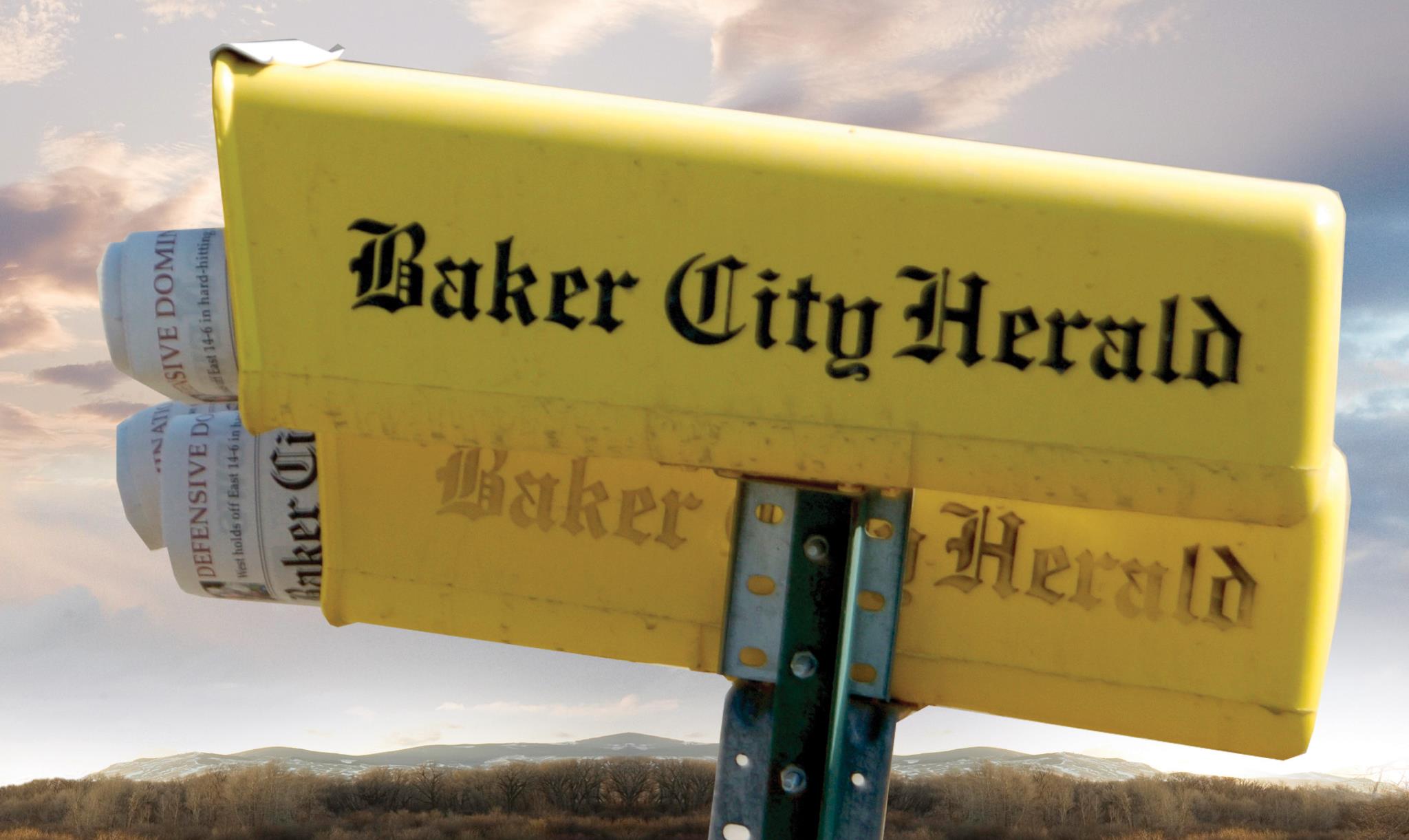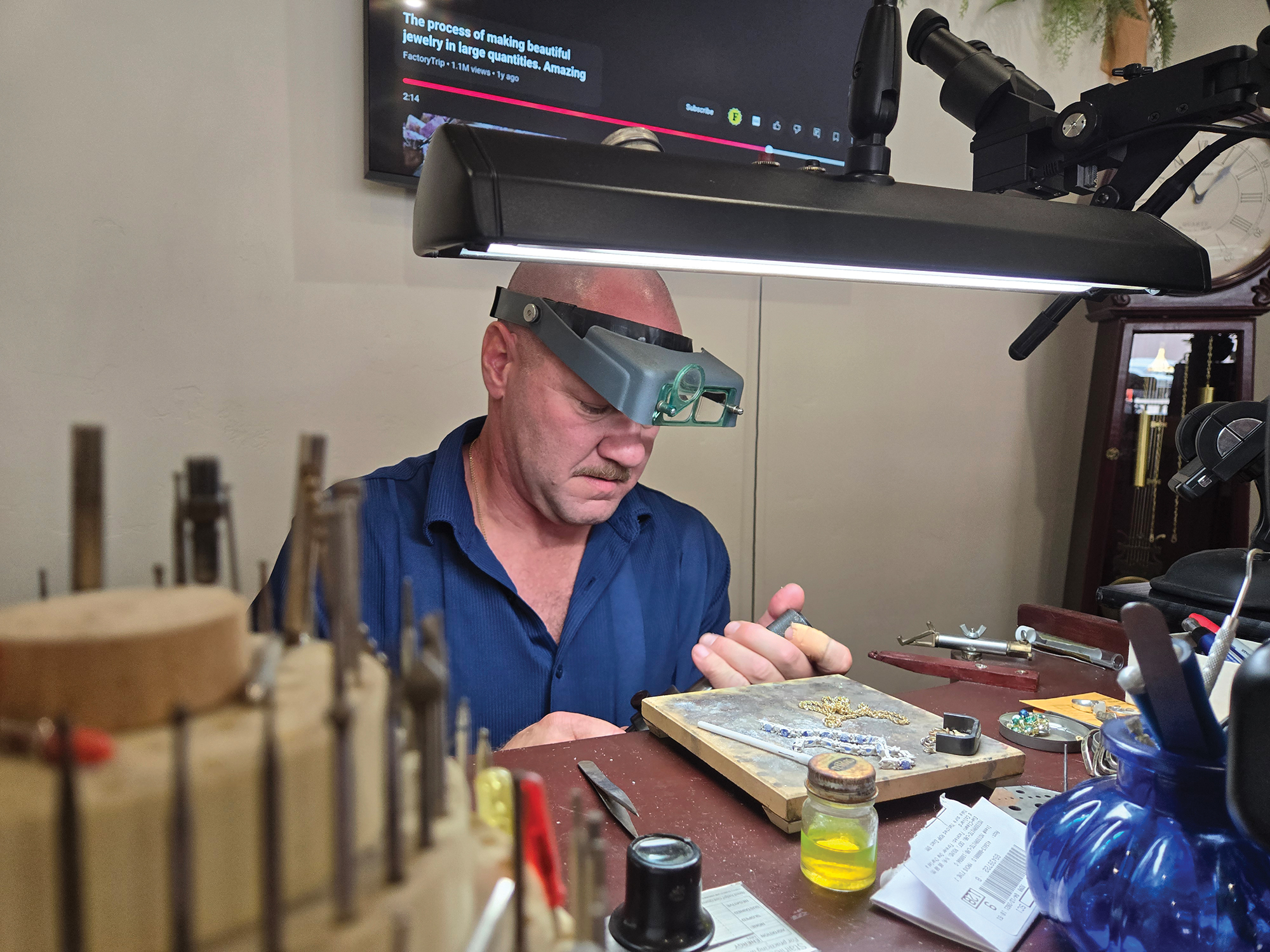Tackling A Tuff Task
Published 7:30 am Thursday, July 20, 2017

- Kathy Orr / For the Baker City HeraldDan McQuisten, Baker County’s facilities maintenance foreman, talks about the damage to sections of the stairwell at the northwest corner of the County Courthouse.
The northwest stairway entrance to the Baker County Courthouse will get a facelift this fall.
Tuffstone — and the grout that holds it in place — used in the construction of the building and its exterior stairwells is degrading as a result of moisture and the use of ice-melting chemicals.
The courthouse was built in 1908.
“Ice melter, chemicals and just water itself off the stairwell — ice and whatnot — has kind of permeated this old tuff (stone) and it’s broken it apart,” said Daniel McQuisten, the county’s facilities maintenance foreman as he pointed out areas on the east stairwell where the tuffstone and grout between them was crumbling. “The tuff (stone) is so permeable, it’s actually just basically saturated the block and crumbling and deteriorating and crumbling from the inside out.”
The damage is clearly evident on the inside and outside of all three exterior stairwells at the courthouse. The two stairwells on the east (Fourth Street) side of the courthouse will be repaired next year.
The county’s facilities department has been putting aside money for the project for the past three years and has $60,000 to do the work.
McQuisten also pointed out where the stone was discolored from the water and chemical damage.
He said that structurally the stairwells are not in any danger — the tuffstone doesn’t actually support them. Nor do the blocks of it that clad the rest of the building.
“It’s basically a siding for the building,” McQuisten said. “The structure of the building is fine. The tuff (stone) is actually a façade.”
The qualified stonemason who is awarded the contract to replace the stone will remove each deteriorated block and measure its exact dimensions to enable them to refabricate a precise replacement, McQuisten said.
“They will literally disassemble this whole thing,” McQuisten said as he pointed to the stairwell.
Last year the county was granted a permit by the BLM to remove 150 tons of Pleasant Valley tuffstone from a quarry on public land on Hixon Road.
McQuisten said the area southeast of Baker is where the original tuffstone, a type of rock formed from volcanic ash (see story at right), used in the construction of the courthouse was quarried.
The boulders that have been hauled to the county’s storage yard on E Street are what the stonemason will use to create the blocks to repair the stairwells.
McQuisten said the job is especially challenging because the contractor must be certified to do restoration work on historic buildings registered with the State Historic Preservation Office (SHPO).
“We want to put everything back as absolutely close to or equal to the historic nature of what was here,” he said. “We need to meet their (SHPO’s) requirements as well as maintain the integrity of the building.”
A TUFF HISTORY
The stone that graces many of Baker City’s historic buildings started as superheated ash erupting from a volcanic vent about 15.8 million years ago near Castle Rock in northern Malheur County.
It was a large vent that likely had four major eruptions, said Mark Ferns of Baker City, a retired geologist from the Oregon Department of Geology and Mineral Industries.
Ferns said Martin Streck, a geology professor at Portland State University, has done considerable research on the eruptions that produced what’s known as the Dinner Creek tuff.
The vents belched out massive amounts of ash that spread across Northeastern Oregon and into Idaho, Ferns said. The ash consolidated rapidly into stone as it cooled. The ash is rhyolite, a type of eruptive volcanic rock that is chemically equivalent to granite (which is an “intrusive” rock, meaning it forms underground rather than erupts “extrusive”).
Besides the tuffstone deposits in the Pleasant Valley area, the stone was quarried in the Sparta area, Ferns said.
— Jayson Jacoby
See more in the July 19, 2017, issue of the Baker City Herald.









